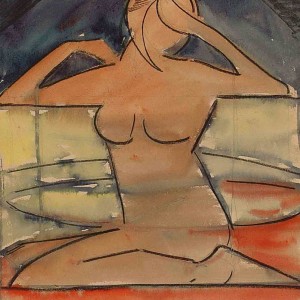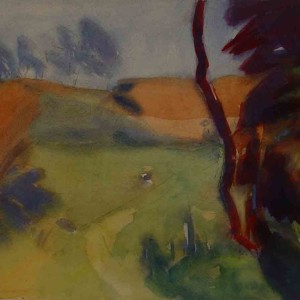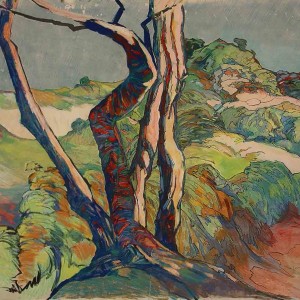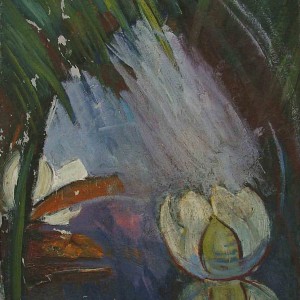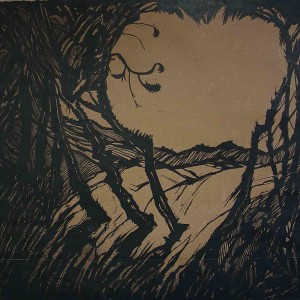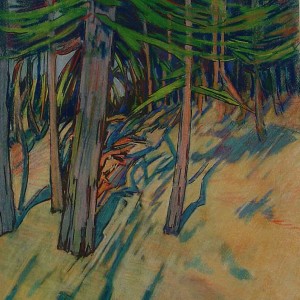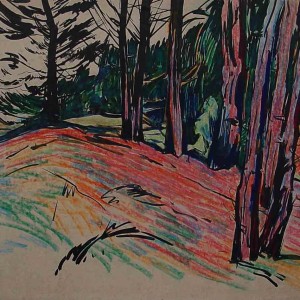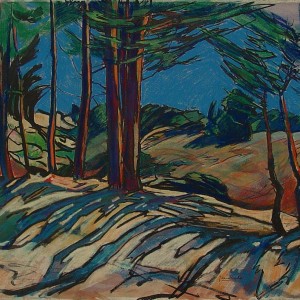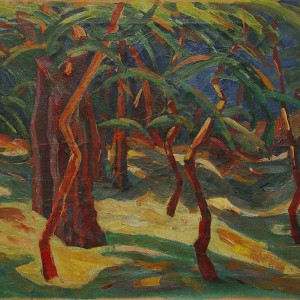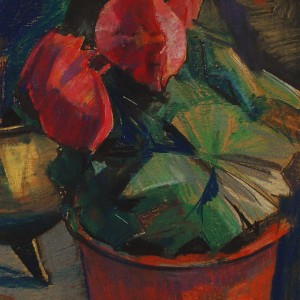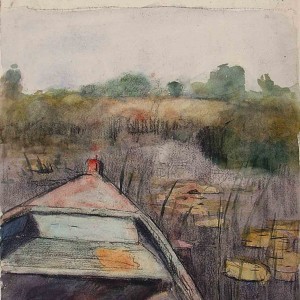page under construction.
From around 1913 Sirks abstracted form and colour and began to alter the one-point perspective (Cubism). Sirks was intrigued with the concept of time and reality and from 1914 there are examples of multiple perspectives in his etchings and drawings.(Stillife Composition 1915).
When Sirks began to meditate,around 1916, he externalised the visions he experienced. His palette is dominated by yellow and orange (Vision 1916) In his self-portraits (Self-portrait 1918)he introduces colour to convey emotion. A deep-blue background balances with the colour of the tie and creates a sense of harmony but the jaggered red angles that shoot angrily accross the face emphasise the intense confrontational stare.Sirks exhibited the portrait series in the 1918 The Signal Exhibition (The Bergen School -with Henri Le Fauconnier,Charley Toorop, Jan Toorop)
The 1918 Rotterdam Trams painting is an example of an expressionistic urban theme with the isolated figures in the foreground of the busy urban landscape.
The pastel landscapes of The Brabant Series of 1922 show an abstraction of colour and a distortion of the shape of the trees. Due to the close-up perpsective angle,the viewer’s eye is pulled straight into the vibrantly coloured setting. (Trees 1922)
Sirks continued to abstract colour and form throughout his career (Concarneau, Dancing Trees)
- Female figure watercolour study 1917 21 x 17cm
- Landscape drawing 1920-25 34 x 51cm
- Trees pastel drawing 1924 75 x 88cm
- Water lilies pastel 1921 57 x 43 cm.
- Trees ink drawing 1922 77 x 79cm.
- Trees Pastel 1922 58 x 44 cm.
- Trees pastel drawing c 1922 46x60cm
- Trees pastel drawing 1922 51 x 64 cm.
- Dancing Trees oil painting 1925-26 41 x 42 cm.
- Trees pastel drawing 1922 59 x 45 cm.
- Stillife Composition c1915 43 x 30 cm.
- Stillife pastel c 1915 50 x 35 cm.
- Rowboat c1916 53 x 37cm.
